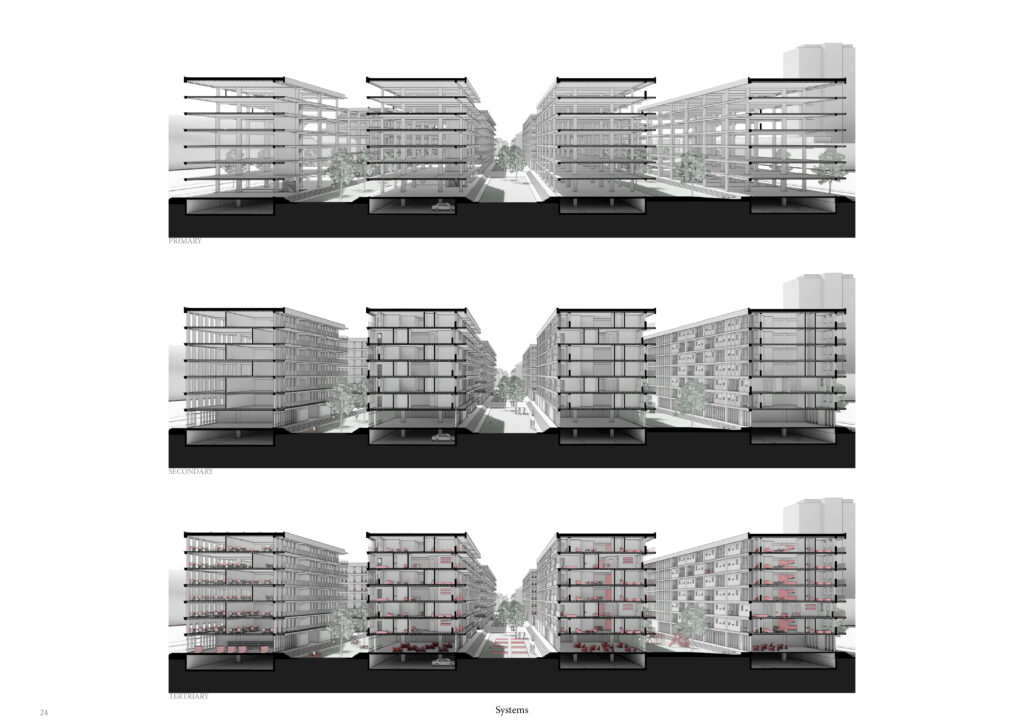
The limited inclusion of the human factor within the architectural adaptability scope results in systems excluding the occupant’s influence over the space that he occupies. The followed methodology was formulated starting from the urban scale with an increasingly narrow focus. It was found that the precondition for architectural adaptability comes down to separating building components into categories based on their lifespan and increase the distribution of control that occupiers have over these systems. Results indicate that the degree of adaptability will be determined by the defined baseline that supports systems with a higher rate of change. The intentional contrast distinguishes the permanency of the proposed primary systems from the temporality that secondary and tertiary systems convey, reflecting the increased distribution of control that users have over their built environment. Architecture is able to respond accordingly to life events when required, allowing people to adapt their space to their needs and avoid the need to adapt to a fixed space. Internal adaptation of spaces happens within a programmatic viewpoint that allows their interchangeability within defined zones. The applicability of the findings is relevant considering the entanglement of systems from current architectural practice that combines components requiring change at different rates. Its potential use can be applied when considering the occupant as a stakeholder in an adaptable system, redistributing control and responsibility over higher levels of the built environment.
Study mentor: Luca Deon








